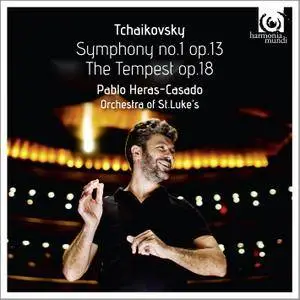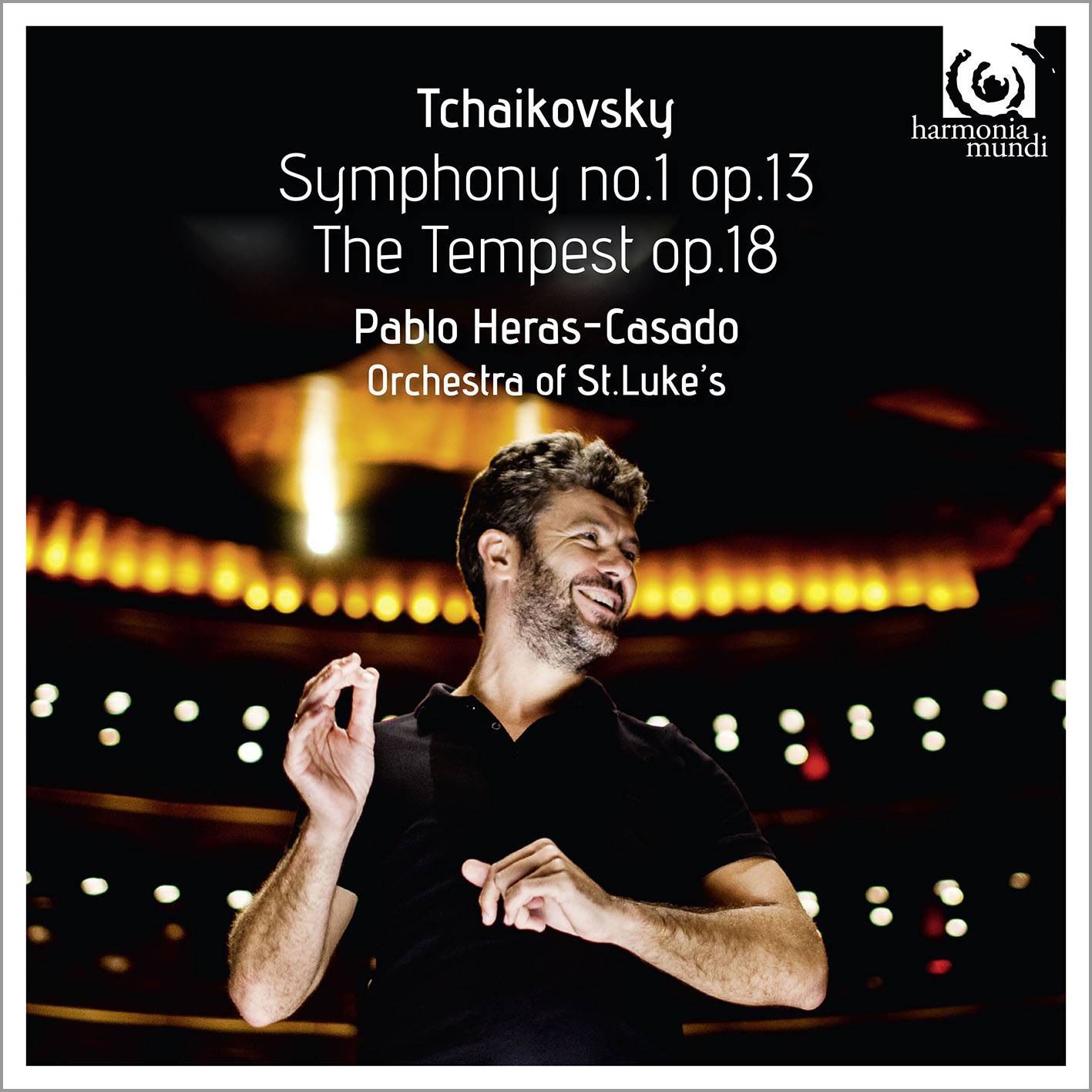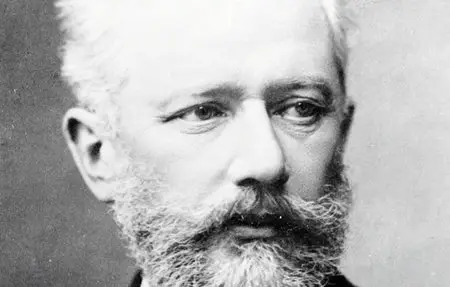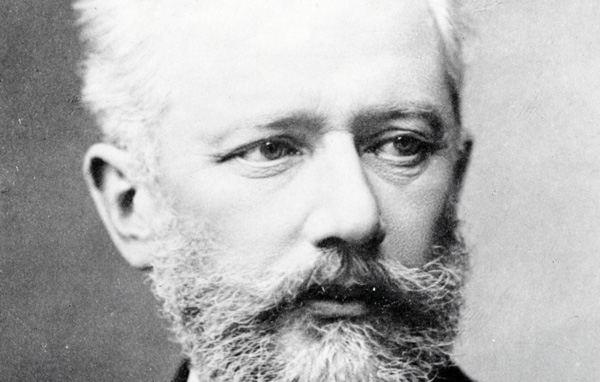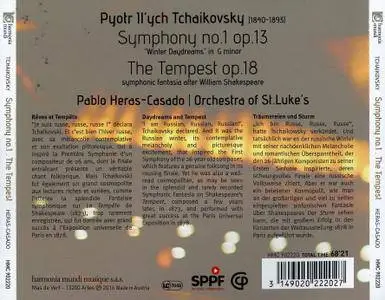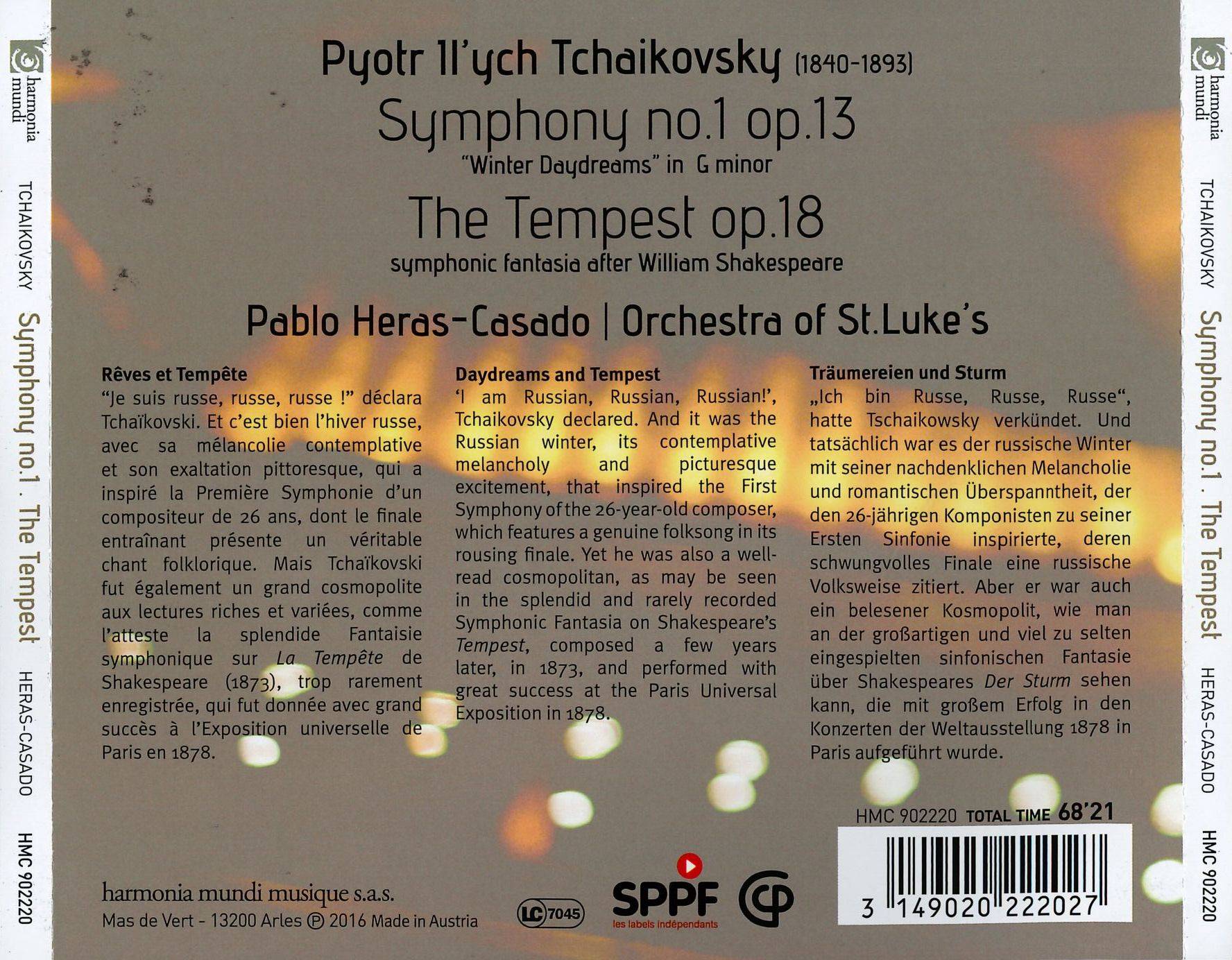Tchaikovsky: Symphony No. 1 'Winter Daydreams' Op. 13; The Tempest Op. 18 (2016)
Orchestra of St. Luke's; Pablo Heras-Casado, conductor
EAC | FLAC | Image (Cue&Log) ~ 286 Mb | Mp3 (CBR320) ~ 159 Mb | Artwork included
Genre: Classical | Label: Harmonia Mundi | # HMC902220 | Time: 01:08:20
Orchestra of St. Luke's; Pablo Heras-Casado, conductor
EAC | FLAC | Image (Cue&Log) ~ 286 Mb | Mp3 (CBR320) ~ 159 Mb | Artwork included
Genre: Classical | Label: Harmonia Mundi | # HMC902220 | Time: 01:08:20
Pablo Heras-Casado enjoys an unusually varied conducting career—encompassing the great symphonic and operatic repertoire, historically informed performance and cutting-edge contemporary scores. He has served as Principal Conductor of Orchestra of St. Luke’s since 2011, now extended to September 2017. OSL began as a chamber ensemble based at The Church of St. Luke in the Fields in Greenwich Village. Today, St. Luke’s Chamber Ensemble consists of 21 virtuoso artists who perform a diverse repertoire and make up OSL’s artistic core. harmonia mundi are proud to release OSL's debut album for the label featuring two of Tchaikovsky's earliest notable works, both of which are dramatic and vibrant: Symphony No. 1, 'Winter Dreams' and 'The Tempest', a sprawling and turbulent seascape.
For this Harmonia Mundi release, Pablo Heras-Casado and the Orchestra of St. Luke's present two of Pyotr Il'yich Tchaikovsky's early works, the Symphony No. 1 in G minor, "Winter Dreams," Op. 13, and the symphonic fantasia after Shakespeare, The Tempest, Op. 18. While the symphony in its original form failed to please Tchaikovsky's conservative teachers, Anton Rubinstein and Nikolai Zaremba, its revised version was one of the young composer's earliest successes with an audience and proved that his talents for long-breathed melodies and rich orchestration were no impediments to working in symphonic form. Heras-Casado and the St. Luke's orchestra give a moody and evocative performance, and the wintry atmosphere and luminous scene painting of the first three movements may impress listeners more than the finale, which seems forced, episodic, and academic, even in the best hands. Essentially a tone poem with a loose program, The Tempest is less problematic than the symphony in its formal aspects, and in several ways it anticipates the fantasy overture Romeo and Juliet, not least in its dramatic action music but also in its characteristic love theme. This performance is warm and passionate, and Heras-Casado and his musicians give it rhythmic vitality where the music needs it. The recorded sound in both works is vivid and spacious, and approaches audiophile quality in its crisp details and transparent tone colors.Review by Blair Sanderson, Allmusic.com
Victoria, Monteverdi, Carter, Boulez and a great deal in between: Pablo Heras-Casado is one of those conductors, not common in any generation, who dine further afield than the meat-and-potatoes repertoire offered by most of his colleagues. The work he does has its place and time. A sense of place in the Winter Daydreams Symphony – a rattling sleigh, a misty steppe and so on – is well provided for on record, and if you’re familiar with a piece generally underrated on account of certain weaknesses in the finale, your tastes may embrace, moving from East to West, Golovanov, Smetáček, Karajan, Rostropovich, Jurowski (both with the LPO) and Tilson Thomas.
In their different ways, all these conductors convey the sense of a distinctively Russian composer taking his first steps, some confident, some faltering, in a genre hitherto foreign to his tradition. The context of its time, however, the 1866-ness of the piece, is more elusive, and here Heras-Casado brings a special alertness to the pointing of phrase and building of form that makes sense of what the composer’s brother Modest tells us about the works’s difficult birth, a decade before Brahms finally produced his own First Symphony. For astutely chosen exemplars, Tchaikovsky would play through the Italian Symphony of Mendelssohn and the Spring Symphony of Schumann.
This is hardly the first recording to bring Mendelssohnian deftness to the Scherzo and the waltz-Trio (and to imagine the influence working spookily in reverse, listen to the second movement of Mendelssohn’s Lobgesang in Heras-Casado’s recording with the Freiburg Baroque Orchestra), but the thinning out of the Scherzo to a few solo voices – like guests drifting away from the Act 3 ball of Eugene Onegin – is so characteristic of both composers. It is achieved here with an intimacy that comes naturally to chamber orchestras, rather than as one of those sudden hushes implied by the kind of ‘now, children, let’s be quiet as mice’ gestures sometimes seen on the podium, perhaps more for the audience than the orchestra’s benefit. (At this point and others, the most recent rival recording, of the RLPO and Vasily Petrenko – Onyx, 8/16 – is neatly done but generic.) And Schumann? Try the barely contained but uninflated exuberance of the first movement’s main statements in the brass.
The nearest interpretative point of comparison, then, is with Jurowski (LPO, 11/09), who moves with no less flair between period and big symphonic orchestras. Nonetheless, the Orchestra of St Luke’s is a Classically sized and inclined ensemble. The difference in scale tells not in lack of impact but the reverse. When trombones and bass drum make telling entrances in the outer movements, you know about it. The finale’s string fugato is that crucial degree more sinewy – and convincing – when taken on the wing by musicians for whom Mozart rather than Mahler is daily bread. Unlike Sir Roger Norrington’s Pathétique, this historically sensitive approach does not entail a stripped-pine tone quality.
With a flexible but coherent momentum, Heras-Casado takes his time to draw out the shy second theme of the symphony’s Adagio cantabile, which steals in with sensuous reticence. His boldest step is to lend Brucknerian nobility to the theme’s return on full horns at the movement’s climax: it’s much less crude than any other version I’ve heard and brings a new pathos to the coda.
There is throughout the symphony a continence of rhetoric that may appeal to anyone not unshakably attached to Golovanov, Svetlanov and their kin. Even the finale’s efficient rather than inspired episodes of contrapuntal imitation are elevated to bring the symphony to a well earned point of arrival worthy of comparison with Jurowski and Karajan. The voltage may be lower in The Tempest, but then Heras-Casado’s approach is not to mask the structural cracks in the piece with greasepaint. He attends carefully to each picturesque episode and naturalistic detail, bringing Liszt’s Les préludes to mind more than Tchaikovsky’s Romeo and Juliet. In fact the storm itself lacks nothing in vehemence, and as in the symphony’s first movement, the synchronicity of motion and expressive intent within the string body projects the music more strongly than a larger, more diffuse ensemble (just as a choir of 16 often sounds louder than one of 60). The strange, unison string recitative before the coda (much borrowed by Shostakovich, almost directly so in the Fifth Symphony) is not simply hurled out but introduces a note of properly Shakespearean ambiguity before Prospero’s chorale and the Impressionist seascape take over.
On the heels of Bychkov’s fascinating Pathétique and Barenboim’s latest, positively cinematic take on the orchestral texture of the Violin Concerto, Heras-Casado has me wondering about a new wave of Tchaikovsky performance: shunning hysteria and crocodile tears, painting pictures, telling stories.Review by Peter Quantrill, Gramophone
Tracklist:
Pyotr Ilyich Tchaikovsky (1840-1893)
Symphony No. 1 in G minor, Op. 13 'Winter Daydreams'
01. I. Allegro tranquillo (11:25)
02. II. Adagio cantabile ma non tanto (12:06)
03. III Scherzo. Allegro scherzando giocoso (8:04)
04. IV. Finale. Andante lugubre - Allegro moderato (12:43)
05. The Tempest Op. 18 (24:03)
Exact Audio Copy V1.1 from 23. June 2015
EAC extraction logfile from 24. May 2017, 0:07
Orchestra of St.Luke's, Pablo Heras-Casado / Tchaikovsky - Symphony No.1; The Tempest
Used drive : PLDS DVD-RW DU8A6SH Adapter: 1 ID: 0
Read mode : Secure
Utilize accurate stream : Yes
Defeat audio cache : Yes
Make use of C2 pointers : No
Read offset correction : 6
Overread into Lead-In and Lead-Out : No
Fill up missing offset samples with silence : Yes
Delete leading and trailing silent blocks : No
Null samples used in CRC calculations : Yes
Used interface : Native Win32 interface for Win NT & 2000
Used output format : User Defined Encoder
Selected bitrate : 128 kBit/s
Quality : High
Add ID3 tag : No
Command line compressor : C:\Program Files (x86)\Exact Audio Copy\Flac\flac.exe
Additional command line options : -V -8 -T "Date=%year%" -T "Genre=%genre%" %source%
TOC of the extracted CD
Track | Start | Length | Start sector | End sector
––––––––––––––––––––––––––––-
1 | 0:00.00 | 11:24.52 | 0 | 51351
2 | 11:24.52 | 12:05.40 | 51352 | 105766
3 | 23:30.17 | 8:03.52 | 105767 | 142043
4 | 31:33.69 | 12:43.03 | 142044 | 199271
5 | 44:16.72 | 24:03.02 | 199272 | 307498
Range status and errors
Selected range
Filename C:\temp\Tchaikovsky - Symphony No.1; The Tempest - Heras-Casado\Tchaikovsky - Symphony No.1; The Tempest.wav
Peak level 94.3 %
Extraction speed 4.2 X
Range quality 100.0 %
Test CRC 6B4A7975
Copy CRC 6B4A7975
Copy OK
No errors occurred
AccurateRip summary
Track 1 not present in database
Track 2 not present in database
Track 3 not present in database
Track 4 not present in database
Track 5 not present in database
None of the tracks are present in the AccurateRip database
End of status report
==== Log checksum 4006C5175EFDDCA88784A201F4F8E88646825321CD387629F23A1102A8883248 ====
EAC extraction logfile from 24. May 2017, 0:07
Orchestra of St.Luke's, Pablo Heras-Casado / Tchaikovsky - Symphony No.1; The Tempest
Used drive : PLDS DVD-RW DU8A6SH Adapter: 1 ID: 0
Read mode : Secure
Utilize accurate stream : Yes
Defeat audio cache : Yes
Make use of C2 pointers : No
Read offset correction : 6
Overread into Lead-In and Lead-Out : No
Fill up missing offset samples with silence : Yes
Delete leading and trailing silent blocks : No
Null samples used in CRC calculations : Yes
Used interface : Native Win32 interface for Win NT & 2000
Used output format : User Defined Encoder
Selected bitrate : 128 kBit/s
Quality : High
Add ID3 tag : No
Command line compressor : C:\Program Files (x86)\Exact Audio Copy\Flac\flac.exe
Additional command line options : -V -8 -T "Date=%year%" -T "Genre=%genre%" %source%
TOC of the extracted CD
Track | Start | Length | Start sector | End sector
––––––––––––––––––––––––––––-
1 | 0:00.00 | 11:24.52 | 0 | 51351
2 | 11:24.52 | 12:05.40 | 51352 | 105766
3 | 23:30.17 | 8:03.52 | 105767 | 142043
4 | 31:33.69 | 12:43.03 | 142044 | 199271
5 | 44:16.72 | 24:03.02 | 199272 | 307498
Range status and errors
Selected range
Filename C:\temp\Tchaikovsky - Symphony No.1; The Tempest - Heras-Casado\Tchaikovsky - Symphony No.1; The Tempest.wav
Peak level 94.3 %
Extraction speed 4.2 X
Range quality 100.0 %
Test CRC 6B4A7975
Copy CRC 6B4A7975
Copy OK
No errors occurred
AccurateRip summary
Track 1 not present in database
Track 2 not present in database
Track 3 not present in database
Track 4 not present in database
Track 5 not present in database
None of the tracks are present in the AccurateRip database
End of status report
==== Log checksum 4006C5175EFDDCA88784A201F4F8E88646825321CD387629F23A1102A8883248 ====
foobar2000 1.2 / Dynamic Range Meter 1.1.1
log date: 2017-05-27 02:38:08
––––––––––––––––––––––––––––––––––––––––
Analyzed: Orchestra of St.Luke's, Pablo Heras-Casado / Tchaikovsky - Symphony No.1; The Tempest
––––––––––––––––––––––––––––––––––––––––
DR Peak RMS Duration Track
––––––––––––––––––––––––––––––––––––––––
DR13 -2.64 dB -22.34 dB 11:25 01-Symphony No.1 'Winter Daydreams' - I. Allegro tranquillo
DR15 -8.18 dB -29.84 dB 12:06 02-Symphony No.1 'Winter Daydreams' - II. Adagio cantabile ma non tanto
DR17 -3.80 dB -27.24 dB 8:04 03-Symphony No.1 'Winter Daydreams' - III Scherzo. Allegro scherzando giocoso
DR13 -0.96 dB -19.16 dB 12:43 04-Symphony No.1 'Winter Daydreams' - IV. Finale. Andante lugubre - Allegro moderato
DR16 -0.51 dB -22.94 dB 24:03 05-The Tempest
––––––––––––––––––––––––––––––––––––––––
Number of tracks: 5
Official DR value: DR15
Samplerate: 44100 Hz
Channels: 2
Bits per sample: 16
Bitrate: 580 kbps
Codec: FLAC
================================================================================
log date: 2017-05-27 02:38:08
––––––––––––––––––––––––––––––––––––––––
Analyzed: Orchestra of St.Luke's, Pablo Heras-Casado / Tchaikovsky - Symphony No.1; The Tempest
––––––––––––––––––––––––––––––––––––––––
DR Peak RMS Duration Track
––––––––––––––––––––––––––––––––––––––––
DR13 -2.64 dB -22.34 dB 11:25 01-Symphony No.1 'Winter Daydreams' - I. Allegro tranquillo
DR15 -8.18 dB -29.84 dB 12:06 02-Symphony No.1 'Winter Daydreams' - II. Adagio cantabile ma non tanto
DR17 -3.80 dB -27.24 dB 8:04 03-Symphony No.1 'Winter Daydreams' - III Scherzo. Allegro scherzando giocoso
DR13 -0.96 dB -19.16 dB 12:43 04-Symphony No.1 'Winter Daydreams' - IV. Finale. Andante lugubre - Allegro moderato
DR16 -0.51 dB -22.94 dB 24:03 05-The Tempest
––––––––––––––––––––––––––––––––––––––––
Number of tracks: 5
Official DR value: DR15
Samplerate: 44100 Hz
Channels: 2
Bits per sample: 16
Bitrate: 580 kbps
Codec: FLAC
================================================================================


